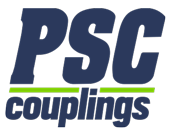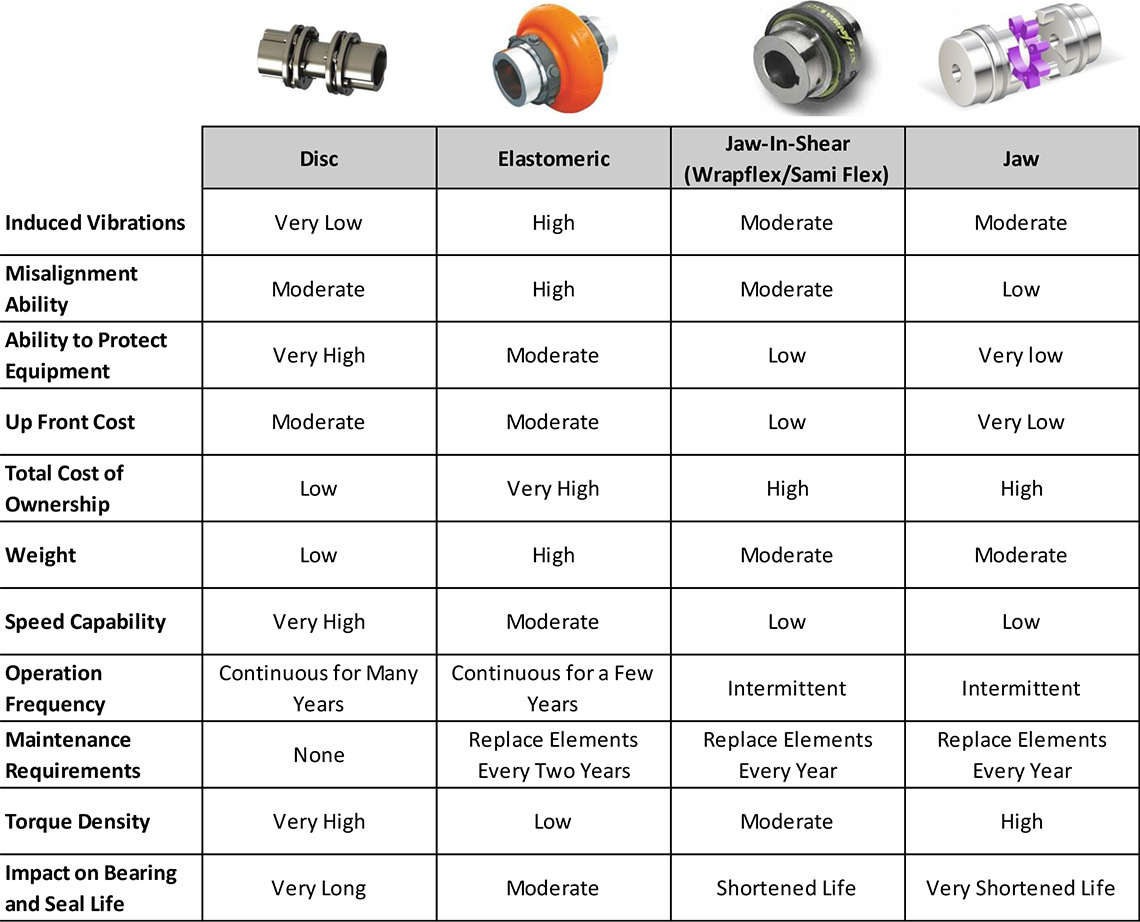The Series 57 disc couplings with a compact, torque dense design and AGMA 9 balance outperform the Omega or Tyre style couplings in many applications at very competitive prices.
Summary
There are many conditions where the Omega style couplings and the Series 57 disc couplings are interchangeable:
- Comparable Torsional Resonance Points: In service, both coupling styles have similar stiffness due to the large diameter of the Omega style coupling required to transmit torque and the small diameter of the Series 57 coupling due to its high torque density.
- Longer Bearing and Seal Life with the Series 57: With the lower weight and better balance of the Series 57 compared to the Omega style coupling, the Series 57 will induce much less vibration and allow significantly longer bearing and seal life.
- Competitive Price: With the compact size of the Series 57 and the efficient design, the prices of the Series 57 couplings are now comparable to the prices of the Omega style couplings.
Technical Review
There are several misconceptions in the market about the benefit of elastomeric couplings compared to disc couplings. In this review, we will clarify a few of these misconceptions. For the sake of this discussion, we will focus our review on the Tyre or Omega style elastomeric couplings.
Misconception #1 – Ability to Dampen
All couplings function as torsional springs in a torsional force, spring, and mass system. Therefore, no coupling can truly dampen vibration. This phenomenon is often misunderstood. However, changing the torsional stiffness characteristics of a coupling will change the point at which resonance will occur.
A softer (lower Kt value) will lower the system resonance frequency, and a stiffer coupling (higher Kt value) will raise the resonance frequency. Because of this, a stiffer coupling could only have the potential to cause problems if your system operates above the first harmonic frequency of the softer coupling. This generally is not a concern with small systems since the motor and driven inertias are low causing the first harmonic resonance to be very high.
Elastomeric material is softer than steel, and when elastomeric couplings and disc couplings of equal diameters are compared, the difference in softness (or torsional stiffness) is evident. However, to transmit the required torque for a specific application, a much larger diameter elastomeric coupling is required. This difference in diameter is further magnified with PSC’s high torque density. As an example, an Omega E20 coupling has a diameter of 7.00″ while a Series 57-516 disc coupling has a diameter of 2.73″ O.D. When the elastomeric coupling is compared to the Series 57 coupling, the torsional stiffness values (or softness) are not orders of magnitude different and can often perform in the same applications.
Misconception #2 – Ability to Reduce Induced Vibration.
This is the single biggest misconception in the market because it is intertwined with dampening ability. Induced coupling vibration is caused by a coupling transmitting torque through connected shafts that are misaligned. Induced coupling vibration exists in virtually all coupling installations since it is nearly impossible to have perfectly aligned shafts with a coupling rotating in true axial concentricity. The primary method to reduce induced coupling vibration is to reduce weight and insure the rotational center of mass of the coupling is close to the rotating center axis.
Elastomeric couplings, like the Omega style with two-piece mold shoes, have significant induced vibration forces due to their large mass combined with residual imbalances from the manufacturing of the elastomeric components. This causes the center of mass to be located further off the rotating center axis.
PSC’s Series 57 disc couplings have a significantly lower level of induced vibrations forces due to two main factors: 1) improved balance of the couplings as manufactured and 2) lower weight due to high torque densities.
This can easily be seen in an example comparing the Omega E20 with PSC Couplings’ Series 57-516. An E20 coupling weighs a minimum of 13 lbs and transmits 2300 in-lbs of continuous torque. The Series 57- 516 weighs 2.3 lbs and transmits 3,000 in-lbs of continuous torque. If both couplings were equally balanced, the E20 would have 565% more induced vibration forces.
When comparing the Series 57-516, which is AGMA 9 rated as standard, to the Omega style coupling, which is not AGMA rated, the Series 57-516 has 10 times better balance on average when considering most elastomeric applications utilize clearance fit hubs. This translates to 5,650% more vibration forces from an E20 when compared to an interference fit Series 57-516.
In the end, this means you will have significantly improved bearing and seal life when using the Series 57.
Comparison to Other Coupling Styles
The following table compares many of the characteristics of the various types of couplings. Each one has strengths that may make it a preferred choice for a specific application.

